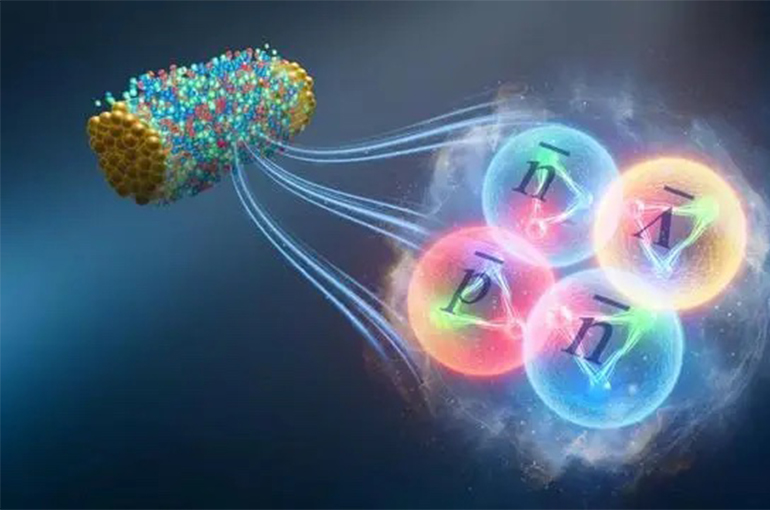 Chinese-Led Physics Team Discover Heaviest Antimatter Hypernucleus So Far
Chinese-Led Physics Team Discover Heaviest Antimatter Hypernucleus So Far(Yicai) Aug. 22 -- An international collaboration led by Chinese scientists has discovered the heaviest antimatter hypernucleus, which is an exotic nucleus that contains at least one hyperon in addition to the usual protons and neutrons, to date, in an extremely rare finding in the world of particle physics, according to the latest data.
The antimatter hypernucleus, Antihyperhydrogen-4, was observed for the first time in a relativistic heavy ion-gold collision experiment conducted at the Relativistic Heavy Ion Collider in the US, the Chinese Academy of Sciences said today, referring to an article published in the leading UK scientific journal Nature yesterday.
Antimatter is rare, and antimatter hypernuclei, which contain hyperons that are heavier than protons and neutrons and can carry an unusual quantum number due to their strong electromagnetic interactions, are very difficult to identify.
The Solenoidal Tracker team, which was led by Qiu Hao from CAS’ Institute of Modern Physics, also measured the lifetime of anti-hyperhydrogen-4 and compared it with its positive particle hyperhydrogen-4, the report said. The study showed that there is no significant measurable difference in the two lifespans, which verifies the symmetry of positive and antimatter properties.
Physics holds that the properties of matter and antimatter are symmetrical and that at the beginning of the universe, there should have been an equal amount of positive matter and antimatter. However, a mysterious physical mechanism led to unequal amounts of positive and antimatter in the early universe, and about 1 in 10 billion positive matter survived, constituting today’s material world and becoming the basis for the birth and existence of human civilization.
Since the ‘negative energy solution’ of the Dirac equation in 1928 predicted the existence of antimatter, scientists have discovered only six types of antimatter hypernuclei in nearly a century.
The Solenoidal Tracker is a large international experimental collaboration at the Relativistic Heavy Ion Collider consisting of more than 700 researchers from 74 units in 14 countries.
Editor: Kim Taylor